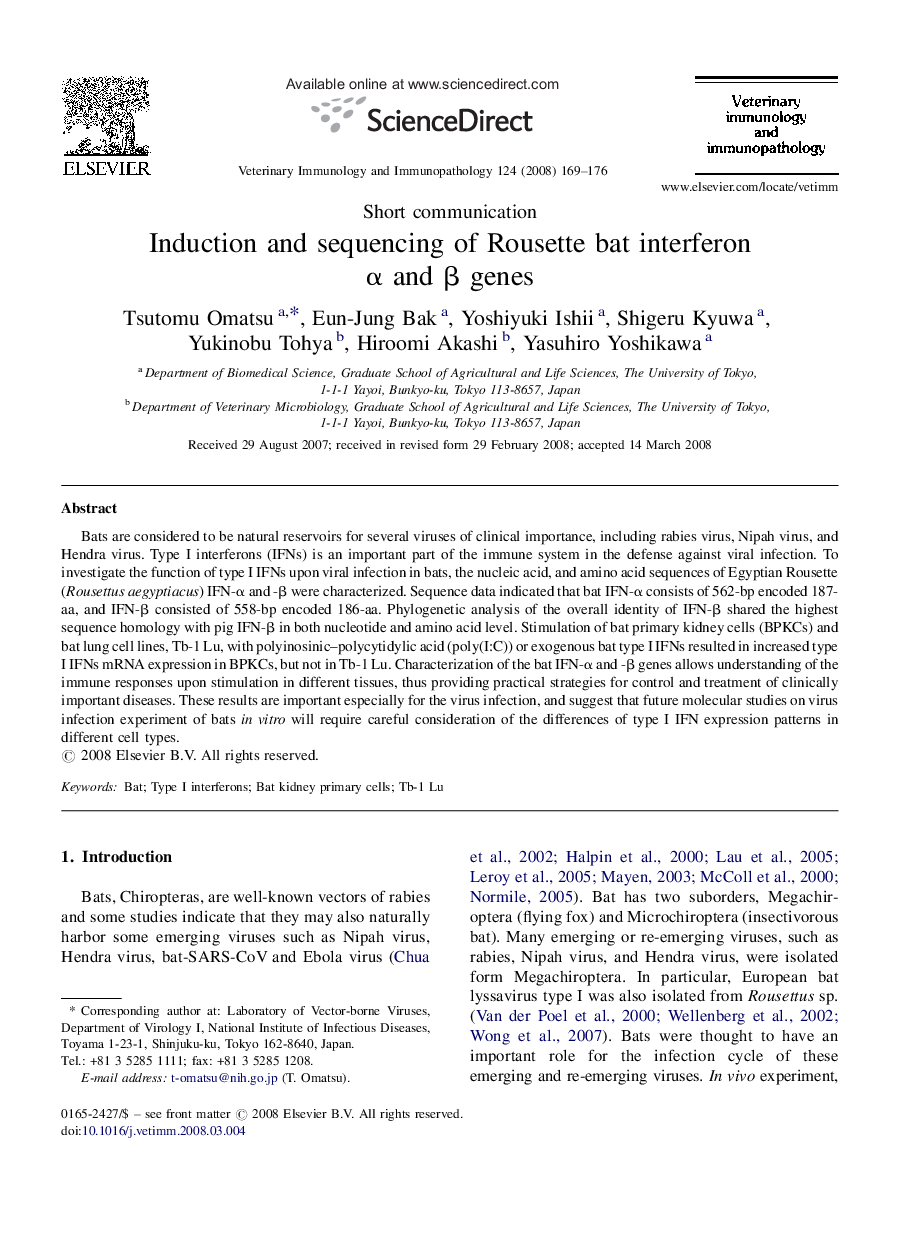| کد مقاله | کد نشریه | سال انتشار | مقاله انگلیسی | نسخه تمام متن |
|---|---|---|---|---|
| 2463060 | 1555098 | 2008 | 8 صفحه PDF | دانلود رایگان |

Bats are considered to be natural reservoirs for several viruses of clinical importance, including rabies virus, Nipah virus, and Hendra virus. Type I interferons (IFNs) is an important part of the immune system in the defense against viral infection. To investigate the function of type I IFNs upon viral infection in bats, the nucleic acid, and amino acid sequences of Egyptian Rousette (Rousettus aegyptiacus) IFN-α and -β were characterized. Sequence data indicated that bat IFN-α consists of 562-bp encoded 187-aa, and IFN-β consisted of 558-bp encoded 186-aa. Phylogenetic analysis of the overall identity of IFN-β shared the highest sequence homology with pig IFN-β in both nucleotide and amino acid level. Stimulation of bat primary kidney cells (BPKCs) and bat lung cell lines, Tb-1 Lu, with polyinosinic–polycytidylic acid (poly(I:C)) or exogenous bat type I IFNs resulted in increased type I IFNs mRNA expression in BPKCs, but not in Tb-1 Lu. Characterization of the bat IFN-α and -β genes allows understanding of the immune responses upon stimulation in different tissues, thus providing practical strategies for control and treatment of clinically important diseases. These results are important especially for the virus infection, and suggest that future molecular studies on virus infection experiment of bats in vitro will require careful consideration of the differences of type I IFN expression patterns in different cell types.
Journal: Veterinary Immunology and Immunopathology - Volume 124, Issues 1–2, 15 July 2008, Pages 169–176